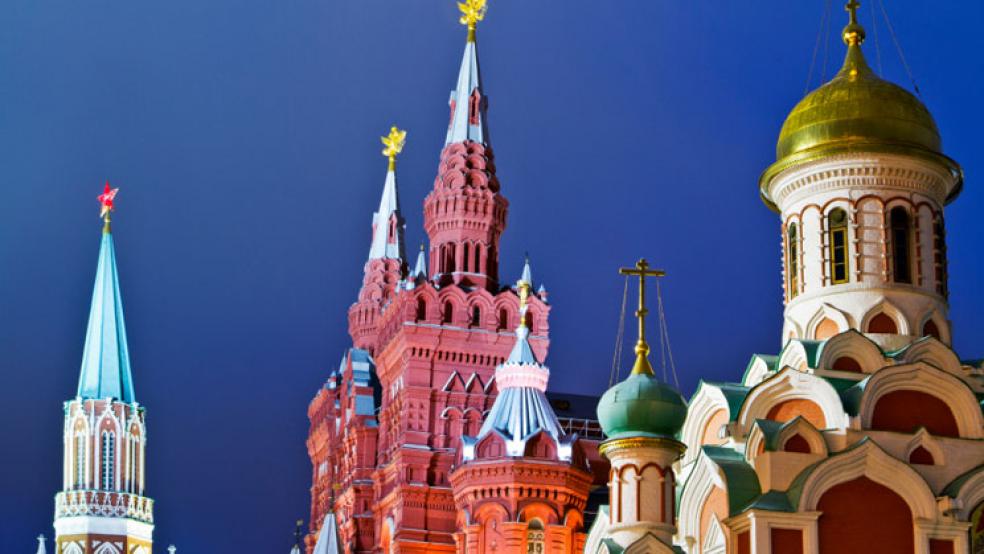In further evidence that international sanctions are battering the Russian economy, the Bank of Russia on Friday announced that it had raised its benchmark interest rate from 8 percent to 9.5 percent. The move was meant to rein in inflation, which is now above 8 percent and rising, and the continuing decline in the value of the ruble, which is trading at historic lows against other major currencies.
“During September-October significant changes in external conditions have taken place: considerable fall in oil prices and stricter sanctions imposed by certain countries against several large Russian companies,” the bank said in an explanatory statement. “As a result the ruble depreciated[. T]hat together with restrictions on the import of certain food items imposed in August resulted in further acceleration in consumer prices growth.”
Related: Russia Tones Down the Rhetoric as Its Economy Stumbles
The move, which represents a 19 percent hike in borrowing costs, surprised analysts, because it was three times the size they had been expecting in advance of a meeting of the Russian central bank’s board of directors.
Analysts were skeptical that the bank’s move would succeed at either protecting the ruble or halting inflation. Many expected a revision of the bank’s policy of allowing the ruble to float freely against other currencies within a specific value “corridor.”
“Russia’s central bank had to deliver two things at today’s Board meeting in order to stem the slide in the ruble: an aggressive hike in interest rates and an immediate overhaul of the current exchange rate ‘corridor’ policy,” wrote Capital Economics in a research note. “It delivered on the first, but fell short on the second. The result is likely to be an environment in which the ruble remains weak, inflation remains high and monetary policy remains tight.”
To put the move into perspective, the Federal Reserve Board’s Federal Open Market Committee, which sets the U.S. benchmark federal funds rate, has historically changed rates in increments of one quarter or one half of a percentage point. At the beginning of the financial crisis, in December 2008, the Fed lowered rates by between 0.75 percent and 1 percent to quickly bring its key interest rates close to zero.
Related: Ruble’s Nosedive Shows Power of Russian Sanctions
In the U.S., or practically any other major industrialized country, an announcement by the central bank that interest rates were increasing by a full 1.5 percentage points overnight would be a sign of major problems in the economy. According to data from the Federal Reserve Bank of New York, the U.S. hasn’t moved the benchmark interest rate by more than a single percentage point in nearly 35 years. The last time the Fed saw such a large change as necessary was in 1980, in the wake of the battle to halt runaway inflation. At the time, with rates at 20 percent, even a 2 percentage point movement represented a smaller percentage change in borrowing costs than Russian borrowers are facing today.
The Russian bank warned that the country’s economy can expect more troubles in the months ahead.
“Continuing high growth of consumer price[s] will result in [a] persistent increase in inflation expectations creating additional inflation risks,” officials wrote. “The Bank of Russia will continue to take measures aimed at slowing down consumer prices growth to the target of 4 percent in the medium run. If the external conditions improve and inflation and inflation expectation show a stable downward trend, the Bank of Russia will be ready to start monetary policy easing.”
Related: ISIS Delivers ‘Shock and Awe’ with Weapons from U.S., China, Russia
Consumer prices in Russia are rising at an 8.4 percent annual rate, the bank noted, with food in particular becoming more expensive. The bank said the rate of increase in food prices rose from 10.3 percent in August to 11.4 percent in September.
The Russian economy is now all but stagnant, with growth estimated at 0.2 percent in the third quarter, the bank reported.
Top Reads from The Fiscal Times:





